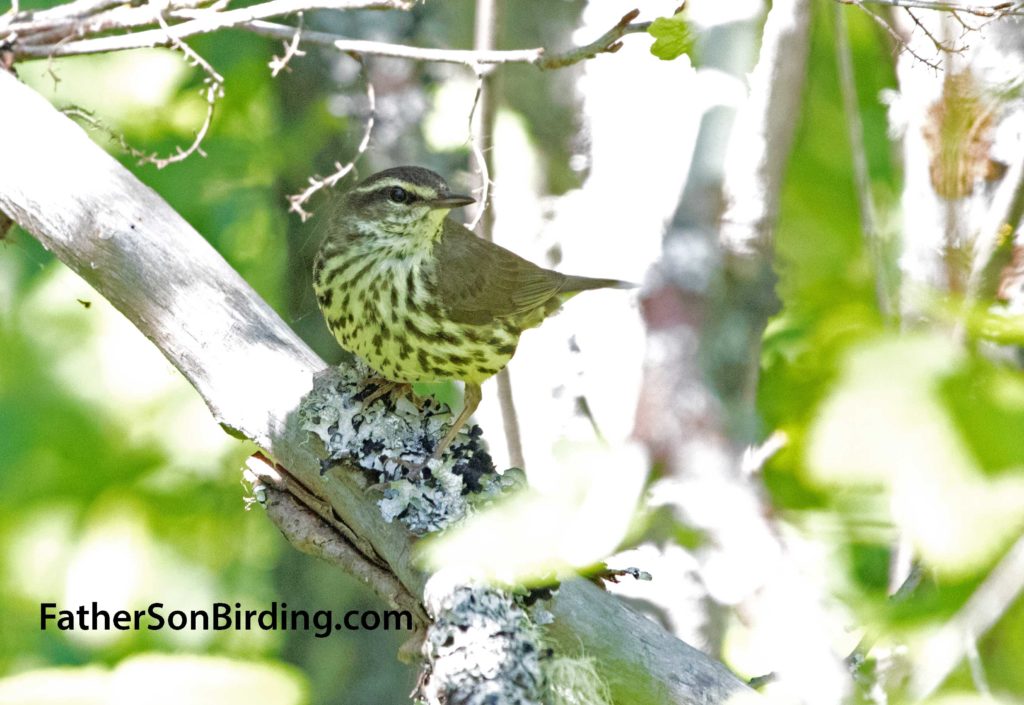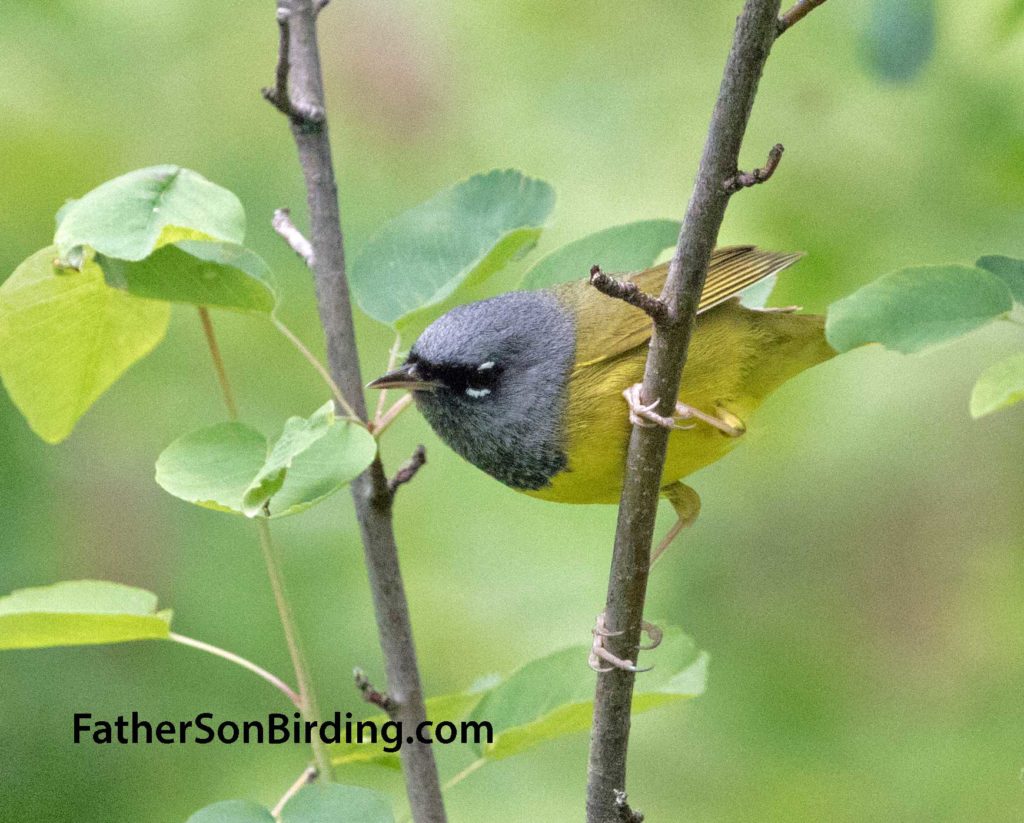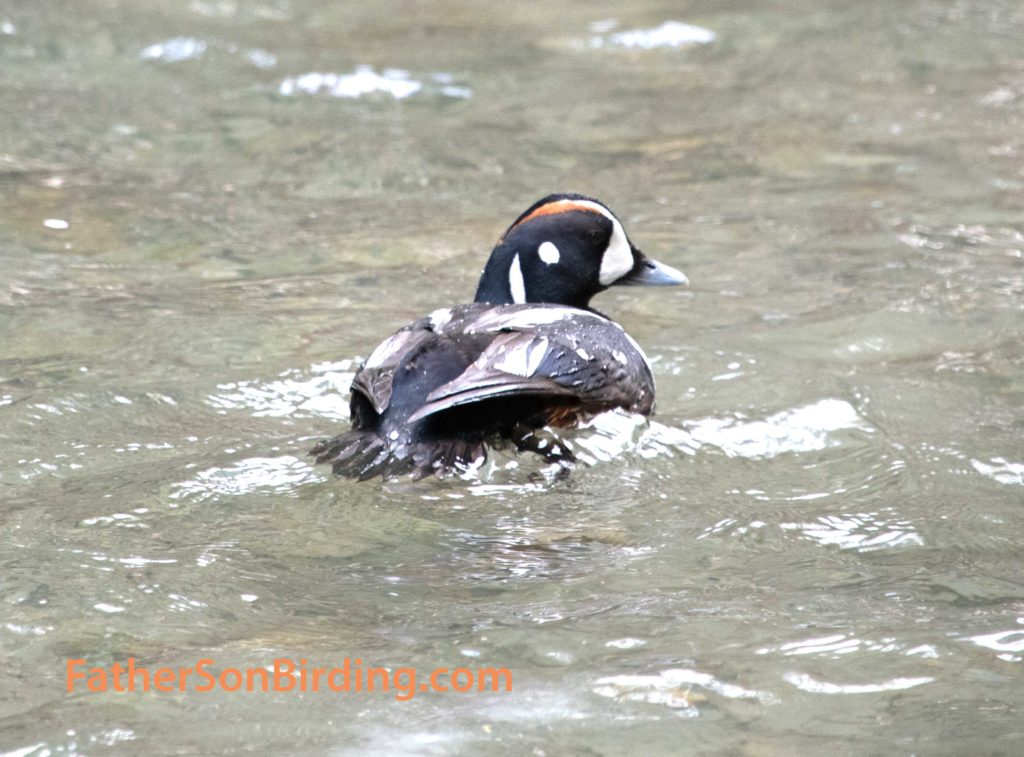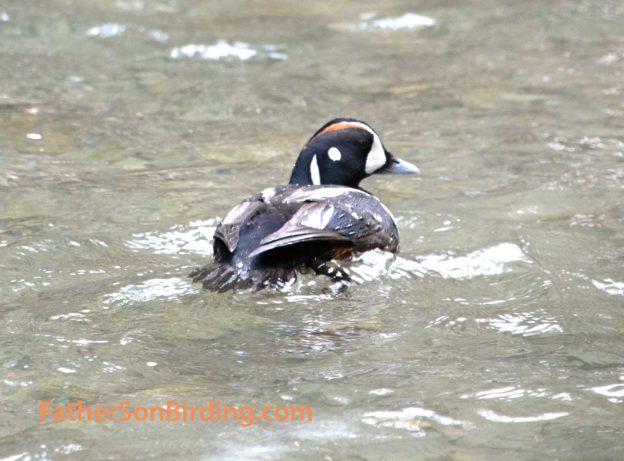
We heard more Northern Waterthrushes than saw them, but did manage an occasional glimpse. (photo by Sneed B. Collard III)
During our 2016 Big Year, Braden and I were fortunate to attend the Monterey Bay Birding Festival. Our all-day “California Specialties” field trip was one of the most exhilarating days of birding we’d had to that point and ever since, we’d wanted to attend a similar event. Last weekend, we finally got our chance by going to Wings Across the Big Sky, held in Kalispell, Montana. As you might imagine, the event was loaded with terrific speakers, good food, and amazing field trips.
Picking our field trips proved a challenge, but on Saturday Braden and I opted to bird in Glacier National Park. Our top target species? Varied Thrush, Chestnut-backed or Boreal Chickadees, Harlequin Duck, and a pie-in-the-sky possibility, the endangered Black Swift. Shortly after 6 a.m., we followed our intrepid leader, Steve Gniadek, out of Kalispell and by 7:30 were birding the woods around Apgar. Almost immediately, we picked up one of our target birds, Chestnut-backed Chickadee, but what really stunned us was the profusion of warblers. In the thick, damp woods, seeing the birds proved a challenge, but their calls rang out all around us and, under Steve’s tutelage, we did our best to start learning them. Over the next two hours, we heard (and eventually saw) eight species—Yellow, Yellow-rumped, Townsend’s, American Redstart, Northern Waterthrush, Orange-crowned, Common Yellowthroat and MacGillivray’s. For Montana, it was an astounding total and almost a quarter of the 33 species we recorded.

MacGillivray’s Warblers have become one of Braden’s and my favorite summer arrivals in Montana. (photo by Sneed B. Collard III)
Our group’s next mission: Harlequin Ducks. The iconic Going-to-the-Sun Road was still closed, but we drove to Avalanche Creek to find a mob scene of hikers and bikers taking advantage of the closed road before cars were allowed up and over Logan Pass. In the confusion, our cars got separated, but as soon as our group stepped out of our car, we heard the eerie, drawn-out call of a Varied Thrush. “Let’s find it!” Braden exclaimed, leading us into a patch of conifers and, sure enough, we caught good, brief glimpses of this spectacular bird.
No sooner had we stepped out into the open, Braden and another member of our group shouted “Black Swifts!” We looked overhead to see several large black birds zooming about 100 feet above us. “How do you know they’re not Vaux’s?” I asked. The large size and slower wing beats strongly suggested Black Swifts, but a few minutes later, we got a clear answer when a Vaux’s and a Black Swift flew right next to each other, articulating the size difference between the two.
Elated with this bonus—a Lifer for both Braden and me—we headed down to MacDonald Creek to try to locate Harlequin Ducks. We didn’t find them, but got a great look at a Fox Sparrow and heard yet more warblers. By this time our comrades had reformed and we all decided to walk up Avalanche Creek. None of us expected to find the ducks, but at our last stop along the creek, I happened to glance at a shady eddy upstream—just in time to see a large shape disappear beneath the surface!

A Lifer for me, this Harlequin Duck put an end to a two-year search. (photo by Sneed B. Collard III)
I grabbed Braden’s arm. “Braden, watch that spot!” A few seconds later, a gorgeous male Harlequin Duck popped to the surface. The duck performed for our group for twenty minutes. I can’t say I got great photos, but watching this happy, rare white-water paddler enjoy the currents is something Braden and I will never forget.
Breaking News: My fall book, Warblers and Woodpeckers: A Father-Son Big Year of Birding is now available for preorder from Amazon. Click Here!

